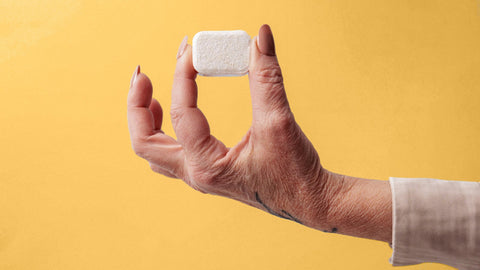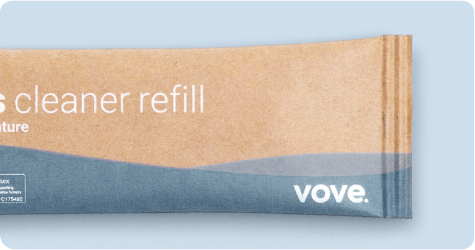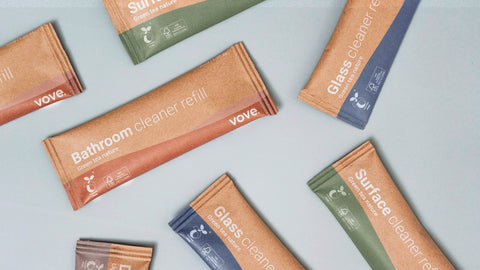In the world of sustainability, there are a plethora of material choices for various applications, and one such material is polyvinyl alcohol (PVA). This polymer has gained attention for its multiple uses, biodegradability, and safety. In this comprehensive guide, we will dive deep into understanding PVA, its environmental impact, and its role in eco-friendly products.
What Is Polyvinyl Alcohol (PVA)?
PVA, also known as PVOH or PVAI, is a colorless, odorless, non-toxic, and biodegradable synthetic polymer. This versatile material originates from ethylene, a gaseous hormone released by plants that trigger fruit ripening. PVA is created through a series of chemical reactions, transforming ethylene into vinyl acetate, which is then polymerized and dissolved in alcohol to form a water-soluble polymer.
How Is PVA Used?
Polyvinyl alcohol has a multitude of applications across various industries, including:
- Textile Industry: PVA is used to strengthen textile yarns, making them more durable and resistant to wear.
- Paper Industry: It is employed as a coating to make paper more grease and oil resistant, improving its quality.
- Pharmaceutical and Food Packaging: PVA is approved by the Food and Drug Administration (FDA) for use in food packaging and pharmaceutical applications, owing to its safety and biodegradability.
- Household Products: PVA is a popular choice for creating water-soluble, single-size pods or packs for dishwasher, laundry, and cleaning products.
- Personal Care and Healthcare: PVA is used in products like children's play slime and contact lens lubricant, demonstrating its safety and versatility.
With such a wide range of uses, it's essential to understand the safety and environmental implications of PVA.
Is PVA Safe?
PVA is considered safe for various applications, including those that come into contact with the human body. It is non-toxic, biodegradable, and approved by the FDA for use in food packaging and pharmaceuticals. PVA's safety is also demonstrated by its use in contact lens lubricants, which come into direct contact with the sensitive human eye.
PVA and Microplastics: Are They Related?
PVA does not contain microplastics, nor does it contribute to microplastic pollution. Since PVA is water-soluble and biodegradable, it does not fall under the category of microplastics. Its high water solubility ensures that it dissolves and breaks down without forming harmful particles.
Biodegradability and Compostability of PVA
While PVA is biodegradable, it is not compostable. Biodegradable materials break down naturally without requiring specific conditions, while compostable materials require specific settings to degrade completely. PVA is water-soluble, dissolving in water and flowing down drains with wastewater. Bacterial microorganisms then break down the dissolved PVA through natural biodegradation, leaving no trace behind. Research indicates that at least 60% of PVA biodegrades within 28 days of dissolving, with approximately 100% of the material breaking down in 90 days or less.
PVA's Environmental Impact
The biodegradable nature of PVA eliminates concerns related to persistence or accumulation in the environment. PVA does not contaminate recycling streams or break down into microplastics. Once PVA is naturally biodegraded by organisms in wastewater, its lifecycle ends, minimising its environmental footprint.
Eco-conscious companies, such as Vove, utilise PVA in their products to reduce their environmental impact. Vove’s laundry detergent tabs, for instance, contain PVA, allowing the tabs to dissolve completely in water, making them safe for both the skin and the planet.
PVA Compared to Other Polymers
It is crucial to differentiate PVA from other polymers that may have similar acronyms or terms, such as polyvinyl acetate (PVAc) and polyvinyl chloride (PVC).
- Polyvinyl Alcohol (PVA): A non-toxic, biodegradable polymer used in various industries.
- Polyvinyl Acetate (PVAc): A rubbery polymer commonly used as glue in woodworking.
- Polyvinyl Chloride (PVC): A toxic plastic polymer that often contains phthalates and heavy metals, posing health and environmental risks.
Understanding these differences is vital in making informed choices for safe and eco-friendly products.
Addressing Concerns About PVA
Some studies have questioned PVA's biodegradability, but it is essential to consider the source and context of such research. For example, a study funded by a competitor of a company using PVA in their products may have a vested interest in casting doubt on PVA's sustainability. It is crucial to examine the research thoroughly and consider its funding sources before drawing conclusions.
Moreover, PVA's biodegradation may not be identical to that of natural materials like banana peels, but it remains a biodegradable synthetic polymer with minimal environmental impact.
Benefits of PVA in Eco-Friendly Products
PVA offers several advantages when used in sustainable products, such as:
- Reduced waste and overproduction: PVA-coated products like dishwasher and laundry pods minimise product breakage, leading to less waste and overproduction.
- Efficient packaging: PVA allows for compact packaging, utilizing up to 90% of the space in a box, resulting in reduced shipping-related emissions.
- Safety and biodegradability: PVA's non-toxic and biodegradable properties make it an eco-friendly choice for various applications.
Conclusion
Understanding the science behind polyvinyl alcohol (PVA) is crucial in evaluating its safety and environmental impact. PVA is safe, biodegradable, and free of microplastics, making it an eco-friendly choice for various applications. By using PVA in products like laundry detergent sheets, companies like us can provide earth- and climate-friendly solutions for everyday tasks.




